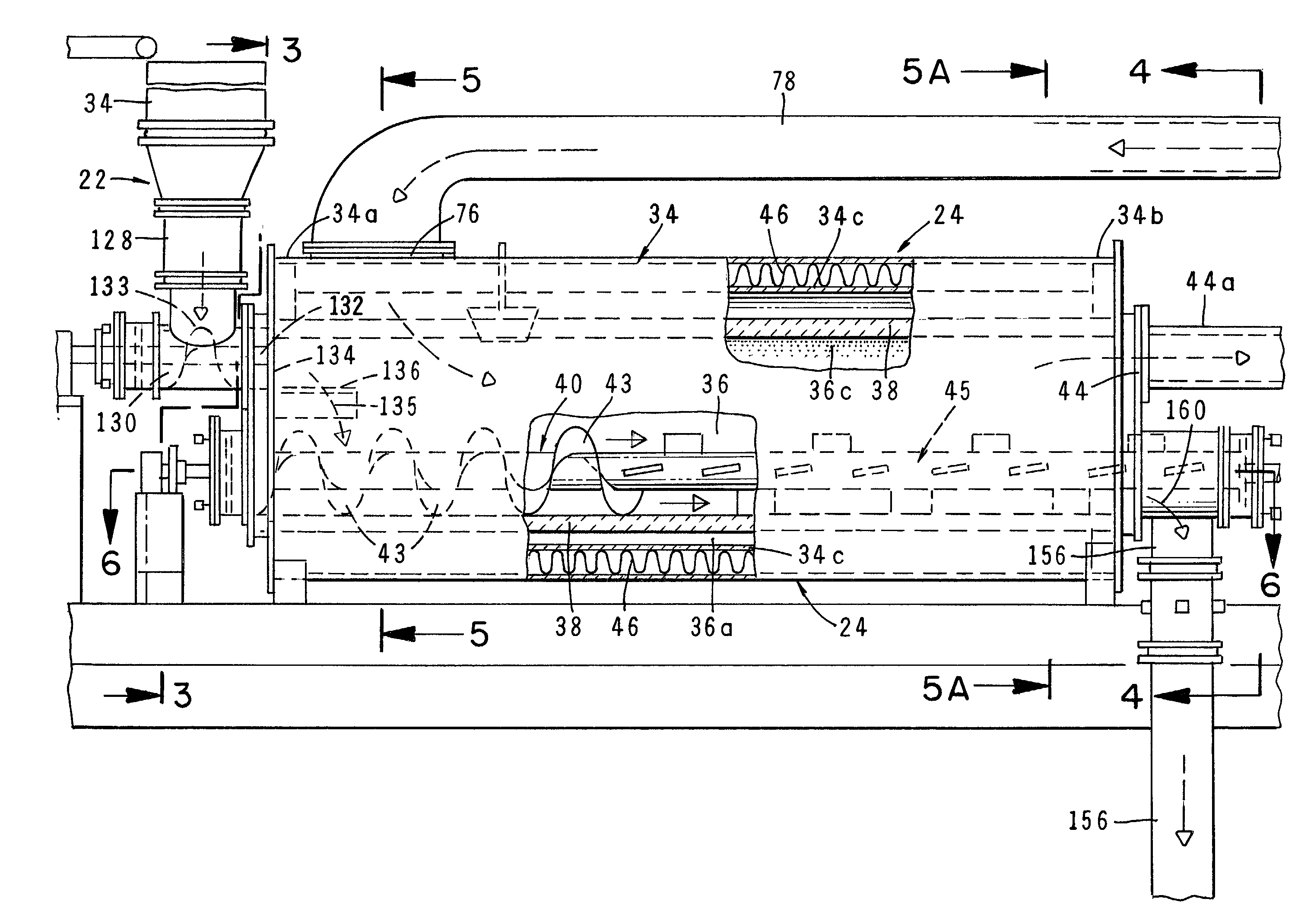Method and apparatus for treatment of waste
a technology of waste treatment and waste, applied in the direction of lighting and heating equipment, solid fuel combustion, combustion types, etc., can solve the problems of troublesome waste, unfavorable environmental protection, and inability to treat all of these types of materials
- Summary
- Abstract
- Description
- Claims
- Application Information
AI Technical Summary
Benefits of technology
Problems solved by technology
Method used
Image
Examples
Embodiment Construction
[0056] Referring to the drawings and particularly to FIGS. 1A and 1B, one form of the apparatus of the invention is there shown. The apparatus here comprises seven major cooperating subsystems, namely a dryer 20, a feed means 22, a thermal chemical reactor or pyrolytic converter 24, a two-stage, thermal oxidizer 26, a steam generator 28, and a steam turbine 30 that is driven by the steam converted by the steam generator.
[0057] In the operation of the apparatus of the invention, the waste material to be treated is first introduced into the dryer subsystem 20 via an inlet 32. After drying in a manner presently to be described, the dried waste material is controllably fed into the thermal reactor 24 by the novel feed means 22 which uniquely includes both a solid feed means and a liquid feed means. The solid feed means for feeding solid waste material to the converter comprises a gravity fed, bottom surge feed hopper 34 of the general construction shown in FIG. 1C. As will be described ...
PUM
 Login to View More
Login to View More Abstract
Description
Claims
Application Information
 Login to View More
Login to View More - R&D
- Intellectual Property
- Life Sciences
- Materials
- Tech Scout
- Unparalleled Data Quality
- Higher Quality Content
- 60% Fewer Hallucinations
Browse by: Latest US Patents, China's latest patents, Technical Efficacy Thesaurus, Application Domain, Technology Topic, Popular Technical Reports.
© 2025 PatSnap. All rights reserved.Legal|Privacy policy|Modern Slavery Act Transparency Statement|Sitemap|About US| Contact US: help@patsnap.com



